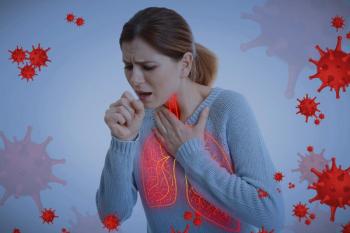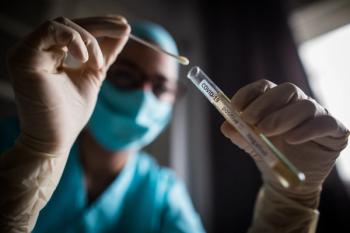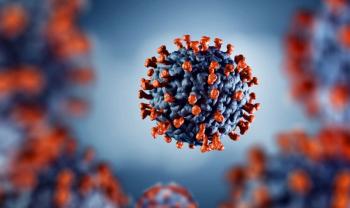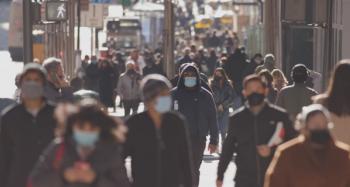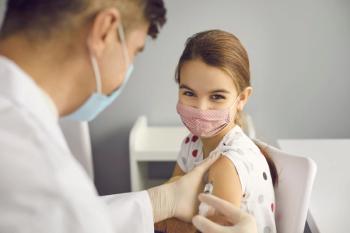
Long COVID Lingers While Patients, Physicians Want Pandemic to End
A physical medicine specialist describes her experience as a doctor and as a patient, and explains why primary care will be the center for treatment.
As 2022 draws to a close, many people want the COVID-19 pandemic to be a distant memory. But patients continue to deal with health and financial effects of post-acute sequelae of SARS-CoV-2 infection (PASC), or
Monica Verduzco-Gutierrez, MD, FAAPMR
The University of Texas Health Science Center at San Antonio
The
A volunteer leader and member of AAPM&R, Verduzco-Gutierrez sat down with Medical Economics to discuss her experience with long COVID: as a physician treating patients, as a patient needing care, and as an advocate for further research of the disease and support for those with it.
She says primary care is crucial in diagnosing and treating long COVID. AAPM&R has
The following transcript was edited for length and clarity.
Medical Economics (ME): As a physician, how did you first encounter patients with long COVID?
Monica Verduzco–Gutierrez: Because I'm a specialist in physical medicine and rehabilitation, some of the first patients we were seeing were ones who had been hospitalized and had impacts after hospitalization. And they had been very critically ill in the intensive care units and they were needing rehabilitation services. Now as COVID has changed, we have more treatments, more ability to treat patients, a lot of patients have mild disease, and we continue to see these patients, even if they have mild disease in clinics, and they still have impacts like fatigue, and attentional and cognitive deficits, hair loss, breathing issues, and so that's what we see patients for in the clinic.
ME: Can you talk about your own experience catching COVID-19, and how that developed into long COVID?
MVG: When I had COVID, it was a very, very mild case and it was at the time of Omicron and it almost just seemed like allergies, which is great. I didn't have a very severe case, I was able to get over it very quickly, I didn't need any kind of medication treatments for it. Also, no one in my family got it, so that was very good. I very quickly recovered. About a couple of weeks later, after I'd had some exertion, like going on a run, I started breaking out in hives and then started having a very elevated heart rate. And then I started having very frequent and severe migraines, which were causing dizziness and pain, and so those were kind of the main symptoms that I had related to my long COVID. So it was very eye-opening and shocking, being able to say OK, this is something that I treat and unfortunately now I have to go through. It's also very eye-opening to be able to say, now I'm having to access care as well for the symptoms that I'm having. And who do I go to?
ME: There have been some federal efforts to recognize long COVID and assist physicians, health agencies, and patients who are dealing with it. Have those been helpful so far? What else would you like to see done?
MVG: It was great that there is the
ME: Can you talk about availability of care: Will it become more available in the future? Are you worried about that?
MVG: I'm definitely worried about that. First, the medical system’s already stressed, there's a lot of people who have less left the workforce in the medical field. A lot of people who have long COVID are in their 40s and 50s. These people generally don't use health care services that much because you're young, you're healthy, you're doing well. And then if you have something new like long COVID, then you're going to be using health services more, maybe it's hard to get access to because everyone's already at the capacity. And then you add in issues like health literacy, social determinants of health. And so some patients may be suffering, they may not know that much about long COVID, they may not know that there's access to special clinics, or that there's no testing and workup and services that may be available to them. So again, I'm very privileged. I'm a physician. I understand long COVID, I know how to try to get availability to my PCP (primary care provider) at least in a relatively quick period of time. I knew how to start treating myself right away with some of the things that I could do on my own. So I was very much privileged to have that, which a lot of people don't have that and so sometimes they'll be able to maybe get into a primary care center and have someone that's knowledgeable and able to at least start the process and start to take care of them.
Through our American Academy of Physical Medicine & Rehabilitation, we have a collaborative of 41 clinics that are doing long COVID work from multiple different specialties. And those have very long waitlists, anywhere from two months to six months to get into some of these clinics. And so if someone's really suffering and they need that specialty care, they're going to be waiting a long time to get it and I don't think it's going to get much better because like I said, these are time- and resource-intensive clinics.
ME: You mentioned about the collaborative of 41 clinics. What do they do?
MVG: Together there's these 41 different clinics that have meetings monthly or more frequently. We're
ME: Is this where there's going to be crossover with primary care physicians?
MVG: There is 100% certainty that primary care will be seeing these patients. I feel like now it should be just part of your questions that you ask someone in their medical history: Did you have COVID? What have been your symptoms? We now are seeing not only the traditional long COVID symptoms, but it's bringing on new diseases, exacerbating disease states that patients have. There's big data studies showing there's more diabetes, there's more kidney disease, there's more liver disease and other metabolic syndrome. And so with that, we're going to need primary care to be able to take these patients, diagnose them, treat them. Patients are having more cardiac events, they're going to need workups for that. They're having shortness of breath, they're having so many different symptoms. So primary care are going to be the most important people in this step because they're always the frontline and they're seeing the patients where they're at. And we know that primary care gets very overburdened as well. Like I said, these are patients who may not have been big utilizers of care, and now they're needing a lot more health care than they did before.
ME: What is your new year's resolution for 2023 for long COVID? Either for helping your patients or raising awareness or dealing with another factor related to long COVID.
MVG: I think probably my New Year's resolution regarding long COVID is to try to get more people on board on treating patients and educated, and not just, oh, here in my department, but in all specialties. I want people, clinicians of all types, to take this seriously, to know how much it impacts patients that are dealing with it, and then have some of the information to be able to start treating patients. To learn maybe about things that you didn't learn in medical school that were typical. We didn't learn so much about
ME: Was there anything I didn't ask about that you want people to know or that you'd like to mention?
MVG: Another little tip that I have for people are in the frontline is, when you're talking to your patients, definitely I want physicians, clinicians to learn about and ask about post exertional malaise. Yes, a lot of us can be fatigued and it sounds really like, yeah, we're all so tired right now, we're working so much. But these patients’ fatigue is really debilitating and we also have to screen further and look at things like post exertional malaise or post exertional symptom exacerbation, which means they may do an activity that seems normal but then it totally knocks them out. I could easily spend a full day in clinic and be fine and go home and do two more hours of emails. But at the end of the day, instead when I was really having bad COVID, I would just be like, I couldn't concentrate and I'd have a huge headache and I'd have to lay down right away and wouldn’t be able to do anything else for the rest of the day. Or, you know, where I can go and run five miles, I couldn't go and walk a mile anymore because then afterwards I'd be on laying out on the couch and it was so hard to do these things. So that's important, and just to make sure that you're not pushing your patients too much, that kind of prioritizing and pacing their activities is going to be helpful and then they can gradually build back when they get better.
Something else to add is, in a very, very small percentage of patients I see – but it is it does happen – is sometimes the vaccine causes something related, very similar to long COVID. And so not to just dismiss those patients because some of them will have a very strong immune response that will give them similar symptoms that seem like long COVID as well.
Newsletter
Pharmacy practice is always changing. Stay ahead of the curve with the Drug Topics newsletter and get the latest drug information, industry trends, and patient care tips.

